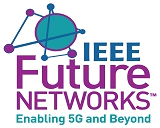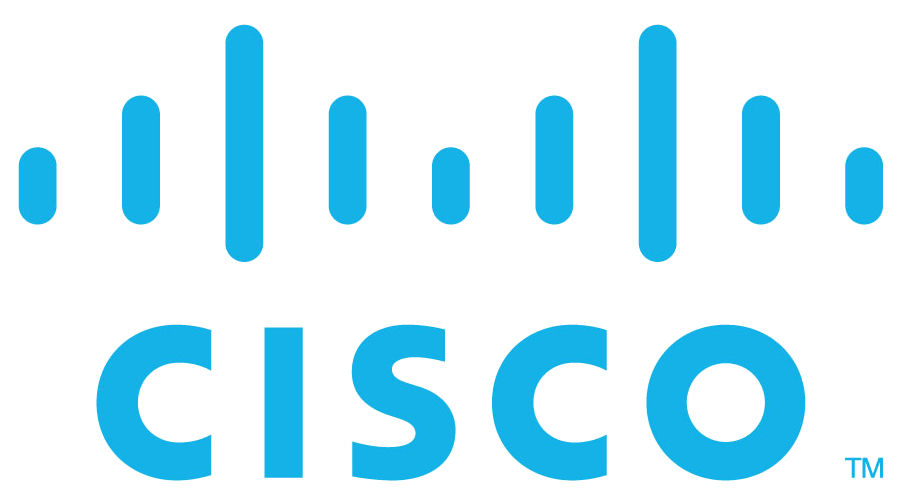Accepted Papers
COMSNETS 2021 paper decisions are out!
Kindly note that the registration for all COMSNETS 2021 papers is mandatory. At least one author per accepted paper (Main conference, Poster, Workshops, Demo) must register at the full rate, i.e., at Regular IEEE/ACM member rate, or at non-member rate. In the case of an accepted paper with exclusively student authors (i.e., all authors are full-time students and no other co-authors), registration at the student rate is permissible. This is as per the guidelines of IEEE and ACM. It is mandatory to register for the paper before uploading the camera ready to EDAS. There will be no exceptions to this policy.
Camera ready papers are due by December 4, 2020 (HARD DEADLINE). Please adhere to the instructions given on the website in preparing the camera ready manuscript.
- RADDPG: Resource Allocation in Cognitive Radio with Deep Reinforcement Learning
Nikita Mishra (Manipal University Jaipur, India); Sumit Srivastava (Manipal University Jaipur, India); Shivendra Sharan (NIIT University, India) - TensorFlip: A Fast Fully-Decentralized Computational Lottery for Cryptocurrency Networks
Aditya Ahuja (Indian Institute of Technology Delhi, India) - Dynamic Multi-Modulation Allocation Scheme for Elastic Optical Networks
Lucas Costa (University of Brasilia, Brazil); André C Drummond (University of Brasilia, Brazil) - Influencing Opinions of Heterogeneous Populations over Finite Time Horizons
Arunabh Saxena (IIM Ahmedabad, India); Bhumesh Kumar (Indian Institute of Technology Bombay, India); Anmol Gupta (IIT Bombay, India); Neeraja Sahasrabudhe (IISER Mohali, India); Sharayu Moharir (Indian Institute of Technology Bombay, India) - Connectionless Edge-Cache Servers for Reducing Cellular Bandwidth Usage in Vehicular Networks
Rui Wang (Michigan State University, USA); Jayanthi Rao (Ford Motor Company & ASEE-NSF, USA); Ce Zhou (Michigan State University, USA); Subir Biswas (Michigan State University, USA) - Utility-Driven Traffic Engineering via Joint Routing and Rate Control for 802.11 MANETs
Gi Tae Kim (Applied Communication Sciences, USA); John Lee (PerspectaLabs, USA); Latha Kant (Perspecta Labs - Formerly Bellcore, USA); Alexander Poylisher (Perspecta Labs, USA) - Impact of pilot lengths of PSAM on Polar code performance in Ricean fading for realistic industrial channels
Yasantha Chamara Samarawickrama (Cork Institute of Technology, Ireland); Victor Cionca (Cork Institute of Technology & Nimbus Centre, Ireland) - An Authenticated Key Agreement Scheme for Secure Communication in Smart Grid
Barnana Baruah (Indian Institute of Information Technology Guwahati, India); Subhasish Dhal (Indian Institute of Information Technology Guwahati, India) - Blockchain Enabled Data Trading with User Consent
Prabal Banerjee (Indian Statistical Institute, India); Amudhan Muthaiah (Indian Institute of Technology, Mandi, India); Sushmita Ruj (Indian Statistical Institute, Kolkata, India) - Towards Multi-agent Reinforcement Learning for Wireless Network Protocol Synthesis
Hrishikesh Dutta (Michigan State University, USA); Subir Biswas (Michigan State University, USA) - A Budgeted Maximum Coverage based mmWave Enabled 5G RSUs Placement in Urban Vehicular Networks
Moyukh Laha (IIT Kharagpur, India); Raja Datta (Indian Institute of Technology Kharagpur, India) - Towards Realistic DTN Simulations for Public Transport Systems
José Irigon de Irigon (Technische Universität Dresden, Germany); Felix Cornelius (TU-Dresden, Germany) - Decision Problems for Joint Transmission in Multi-AP Coordination Framework of IEEE 802.11BE
Ayushneel Titus (IIT Bhilai, India); Rajat Bansal (Indian Institute of Technology Bhilai, India); Thazhathe Veetil Sreejith (IIT Bhillai, India); Arzad Kherani (Indian Institute of Technology, Bhilai, India); Nadeem Akhtar (Arista Networks, India) - LEADER: Low Overhead Rank Attack Detection for Securing RPL based IoT
Somnath Karmakar (Indian Institute of Engineering Science and Technology, India); Jayasree Sengupta (Indian Institute of Engineering Science and Technology, India); Sipra DasBit (Indian Institute of Engineering Science and Technology, Shibpur, India) - Real-Time Task Scheduling in Fog-Cloud Computing Framework for IoT Applications: A Fuzzy Logic-based Approach
Hala Sadek Ali (National Institute of Technology, Warangal, India); Rashmi Ranjan Rout (National Institute of Technology Warangal, India); Priyanka Parimi (National Institute of Technology Warangal, India); Sajal K. Das (Missouri University of Science and Technology, USA) - PBCR: Parameter-based Backoff Counter Regulation in IEEE 802.15.6 CSMA/CA
Kamal Das (National Institute of Technology, Meghalaya, India); Soumen Moulik (National Institute of Technology, Meghalaya, India) - Design of Joint Relay Placement and Scheduling Algorithms for Time-Slotted Networks with Half-Duplex Constraints
Harshavardhana T Gowda (Indian Institute of Space Science and Technology, India); Pragya Shah (Indian Institute of Space Science and Technology, India); Vineeth Bala Sukumaran (Indian Institute of Space Science and Technology, Trivandrum, India) - Drone classification from RF fingerprints using deep residual nets
Sanjoy Basak (Royal Military Academy, Belgium); Sreeraj Rajendran (KU Leuven, Belgium); Sofie Pollin (KU Leuven, Belgium); Bart Scheers (Royal Military Academy, Belgium) - Demand-aware Channel Topologies for Off-chain Payments
Julia Khamis (Technion - Israel Institute of Technology, Israel); Ori Rottenstreich (Technion, Israel) - Transmit Power Minimization in Bidirectional Tag-to-Device Communications for IoT
Shivam Gujral (Indian Institute of Technology Mandi, India); Siddhartha Sarma (Indian Institute of Technology Mandi, India); Supriyo Banerjee (Decision Point Pvt. Ltd.) - Channel Reconstruction in Intelligent Surface aided Communications
Narayan Prasad (Futurewei Technologies, USA); Md Moin Uddin Chowdhury (North Carolina State University, USA); Xiao-Feng Qi (Futurewei Technologies, Inc., USA) - Making IPv6-over-BLE Energy-friendlier: An Adaptive Algorithm for Diverse Traffic
Subhanshu Sahu (Indian Institute of Technology, Mandi, India); Siddhartha Sarma (Indian Institute of Technology Mandi, India) - Wi-Fi Coverage in Indian Homes
Amritha R (IIT Madras, India); Divya B (IIT MADRAS, India); Venkatesh Ramaiyan (Indian Institute of Technology Madras, India) - Design and Validation of BlockEval, A Blockchain Simulator
Deepak Kumar Gouda (Indian Institute of Technology, Guwahati, India); Shashwat Jolly (Indian Institute of Technology Guwahati, India); Kalpesh Kapoor (Indian Institute of Technology Guwahati, India) - Securely Computing Clustering Coefficient for Outsourced Dynamic Encrypted Graph Data
Laltu Sardar (Indian Statistical Institute, India); Gaurav Bansal (Indian Institute of Technology, Jammu, India); Sushmita Ruj (CSIRO Data61, Australia); Kouichi Sakurai (Kyushu University, Japan) - UNBLOCK: Low Complexity Transient Blockage Recovery for Mobile mm-Wave Devices
Venkata Siva Santosh Ganji (Texas A&M University, USA); Tzu-Hsiang Lin (Texas A&M University, USA); Francisco A Espinal (Texas A&M University, USA); P R Kumar (Texas A&M University, USA) - DC-DLLR: A MAC Layer Approach for Reliable and Blockage Tolerant mmWave Indoor Networks
Arijit Bhattacharjee (Indian Institute of Technology Guwahati, India); Ratnajit Bhattacharjee (IIT Guwahati, India); Sanjay Kumar Bose (Indian Institute of Technology Guwahati, India) - A Distributed Algorithm for Overlapped Community Detection in Large-Scale Networks
Dibakar Saha (Indian Institute of Technology Guwahati, India); Partha Sarathi Mandal (Indian Institute of Technology Guwahati, India) - The Meshwork Ledger, its Consensus and Reward Mechanisms
Mayank Raikwar (Norwegian University of Science and Technology, Norway); Danilo Gligoroski (Norwegian University of Science and Technology, Norway) - Hybrid-ARQ protocol for Next Generation Wi-Fi Systems
Romil Vikram Sonigra (IIT MADRAS, India); Shishir G (Qualcomm, India); Nambirajan Seshadri (UCSD, India); David Koilpillai (Indian Institute of Technology Madras, India) - Improving ML Detection of IoT Botnets using Comprehensive Data and Feature Sets
Misha Mehra (Indian Institute of Technology Delhi, India); Jay N. Paranjape (Indian Institute of Technology Delhi, India); Vinay J. Ribeiro (Indian Institute of Technology, Delhi, India) - Mitigating Adversities in Urban IoT-setup: A Sensor Assisted Approach
Chandra Shekhar (IIT, Bhubaneswar, India); Sudipta Saha (Indian Institute of Technology Bhubaneswar, India); Mun Choon Chan (National University of Singapore, Singapore) - Dynamic Power Management for 5G Small Cell Base Station
Yuta Suzuki (The University of Tokyo, Japan); Ryuichi Sakamoto (The University of Tokyo, Japan); Hiroshi Nakamura (University of Tokyo, Japan) - Evaluation of Theoretical Interference Estimation Metrics for Dense Wi-Fi Networks
Srikant Manas Kala (Osaka University, Japan); Vanlin Sathya (University of Chicago, USA); Winston K.G. Seah (Victoria University of Wellington, New Zealand); Hirozumi Yamaguchi (Osaka University, Japan); Teruo Higashino (Osaka University, Japan) - Optimizing Merkle Proof Size for Blockchain Transactions
Avi Mizrahi (Technion, Israel); Noam Koren (Technion, Israel); Ori Rottenstreich (Technion, Israel) - Scalable Coordinated Intelligent Traffic Light Controller for Heterogeneous Traffic Scenarios Using UPPAAL STRATEGO
Thamilselvam B (Indian Institute of Technology Hyderabad, India); Subrahmanyam Kalyanasundaram (IIT Hyderabad, India); Panduranga Rao Marella (Indian Institute of Technology Hyderabad, India) - Fort Formation by an Automaton
Kartikey Kant (Indian Institute of Technology Guwahati, India); Debasish Pattanayak (Indian Statistical Institute, Kolkata, India); Partha Sarathi Mandal (Indian Institute of Technology Guwahati, India) - Sketches for Blockchains
Ori Rottenstreich (Technion, Israel)








































